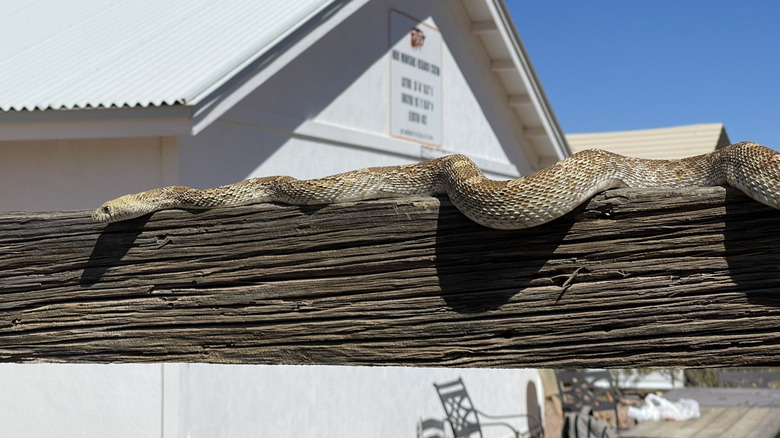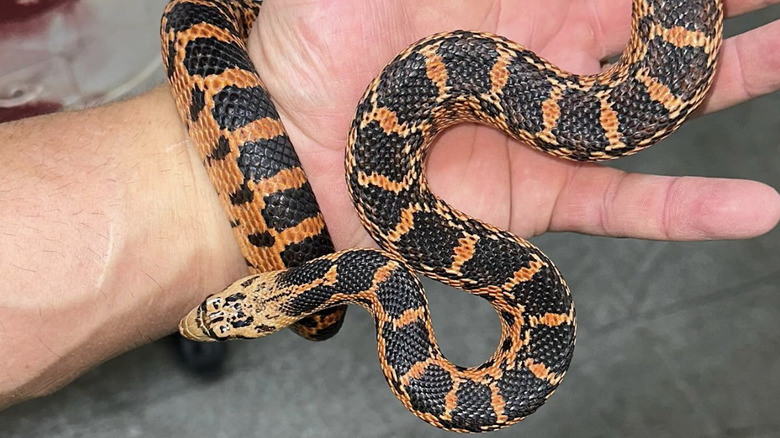Don't Mistake This Friendly Snake For Its More Dangerous Cousin
There is nothing worse than walking out into your driveway or garage and coming face to face with a snake. When this happens, you have a split second to make the decision of whether or not you should take care of the creepy reptile yourself or call animal control. Oftentimes, this split-second decision depends on whether or not the snake is venomous.
While North America doesn't have many of the world's most venomous snakes, we do have a few species that can deal deadly bites. Unfortunately, when it comes to snakes, it can be hard to tell the difference between friend or foe. This is particularly true for gopher snakes and rattlesnakes which look very similar but are on opposite ends of the snake danger scale. In fact, gopher snakes are harmless while rattlesnake bites require a trip to the emergency room.
To learn more about how to tell these two similar-looking snakes apart, we spoke with Jay Brewer, founder of The Reptile Zoo and host of Reptile Royalty on The Roku Channel. According to Brewer, the reason that these two snakes are particularly hard to distinguish is because gopher snakes often mimic the body language of rattlesnakes. "They'll actually rattle their tail because it's very effective at keeping things away from them," explains Brewer, adding, "It's close enough to make a grown man run, especially if you're scared." So, how can you tell if the brown snake shaking its tail is a harmless gopher or a venomous rattler?
How to distinguish a gopher from a rattler
Because gopher snakes can mimic the body language and tail-shaking of rattlesnakes, at first glance it can be quite difficult to tell which snake you are looking at. "People kill gopher snakes all the time, thinking they're rattlesnakes because a gopher snake has a similar pattern," Brewer explains, noting, "but their heads are completely different." Rattlesnakes are pit vipers that have venom glands on the side of their cheeks making their heads appear triangular. Gopher snakes do not have venom glands and their heads are more elongated.
If you aren't sure about the head, it's time to evaluate the tail. Rattlesnakes have tails made of hollow scales that make a humming noise when vibrated. Gopher snakes have long and skinny tails that end in a point instead of the rounded off and wide tail of a rattlesnake. Unfortunately, even though gopher snakes don't have a rattle, they can sound similar to rattlesnakes and, as Brewer warned, be "very noisy" if they are shaking their tails against brush or dead leaves. Because of this, it is important to leave any snake alone if you are ever uncertain of its identity and reach out to your local wildlife organization for help.
To learn more about reptiles from Jay Brewer and his team, watch Season 2 of "Reptile Royalty," now streaming on The Roku Channel.

